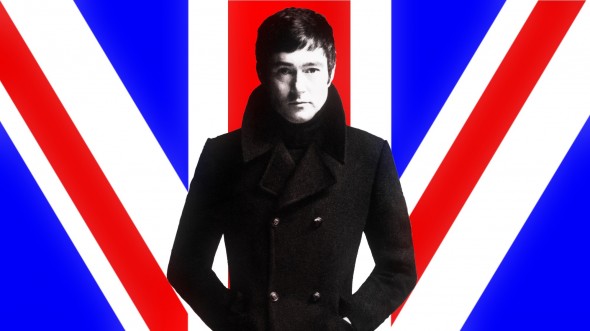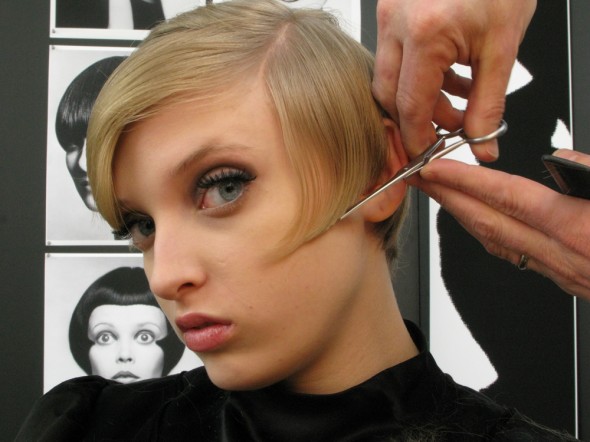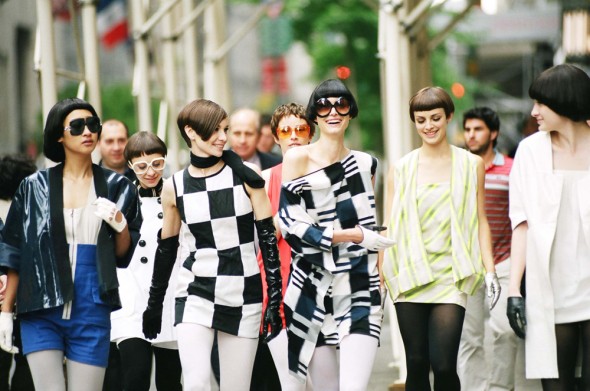
“Shake it,” an 82-year-old Vidal Sassoon demands an elegant waif as his hand vigorously enters and ruffles her hair. Mr. Sassoon has just exited a limo and is striding, entourage in tow, along a downtown LA street en route to a press conference. All that’s missing from making this look like an outtake from Austin Powers: Shears of Death is a saucily shouted “baaaby.”
The scene comes toward the end of the new film Vidal Sassoon The Movie, a loving tribute (to call it a documentary would be to suggest that there is some counter to the point) to the architect of women’s liberation of the follicle, made by his hair (sic) apparent, Bumble and Bumble founder Michael Gordon. It coincides with, and also documents, a presumably splashy salon table book about the stylist that Gordon, the film’s producer, is also working on.
This is a cradle to (knocking on) grave story that tells the tale of a Jewish orphan who rose through the ranks of chic London thanks to his invention of the modern woman’s new hairstyle, eventually succeeding to the helm of an eponymous multi-million dollar hair-care empire.

That the exaltation of a barber seems a little ridiculous doesn’t take into account the profound effect Sassoon’s new do did have in early ’60s Britain, and the world. The development of the geometric, easy to maintain hairstyle did liberate women from the time-consuming and, as soon as Sassoon’s 5-point cut emerged, dated back comb and wave, and Sassoon ushered in the concept of the open, sexy salon that remains the de-facto look for the modern clip joint.
Sassoon’s life is painted here as the rosiest. Hard work and clean living, Vidal espoused a regimen of plenty of exercise, yoga and a good diet. This begat success, and we see clips of the action man hard at work: opening a salon on Madison Ave, launching his product line, helping build houses in post Katrina New Orleans, and appearing on TV.
As might be expected, the film looks great. Director Craig Teper, whose resume is heavy on marketing, commercial and documentary work, shot an easily digestible retrospective that includes vintage newsreels, present day interviews with Sassoon employees and cohorts, and commercials with the signature tag line, “If you don’t look good, we don’t look good,” from the ’70s and ’80s.

The vibrant black-and-white interviews with fellow sartorial revolutionaries, most notably fashion designer Mary Quant, come off as old people reminiscing about how cool they were, but the accompanying visuals of Quant as muse, and of her ground-breaking designs, are certainly noteworthy. The comparisons of Sassoons’ structured creations to Bauhaus architecture are compelling; I would have like to have seen more examples of the buildings in question.
Interest in the superficial elements of the man’s life (watching soccer relaxes him, he was a choir boy, he took elocution lessons to fit in with the toffs) soon fades, however, and after the scenes of swinging London, the travelogue on Sassoon’s life starts to bore. Like the conversations you have while sitting at the hairdressers, this film doesn’t go too deep and many more questions may have been asked.
– Adam Pollock

